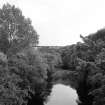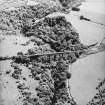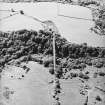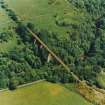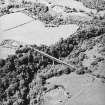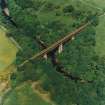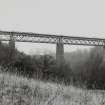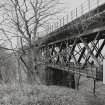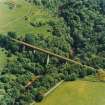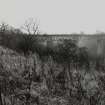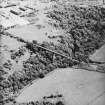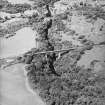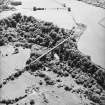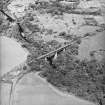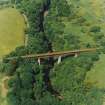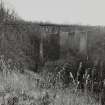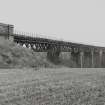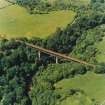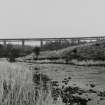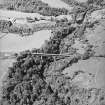Larkhall, Millheugh, Larkhall Viaduct
Railway Viaduct (20th Century)
Site Name Larkhall, Millheugh, Larkhall Viaduct
Classification Railway Viaduct (20th Century)
Alternative Name(s) Larkhall Railway Viaduct; Millheugh Viaduct; Broomhill Viaduct; Avon Water
Canmore ID 45714
Site Number NS75SE 26
NGR NS 75422 50324
NGR Description NS 75322 50253 to NS 75562 50422
Datum OSGB36 - NGR
Permalink http://canmore.org.uk/site/45714
- Council South Lanarkshire
- Parish Dalserf
- Former Region Strathclyde
- Former District Hamilton
- Former County Lanarkshire
NS75SE 26 75422 50324 (NS 75322 50253 to NS 75562 50422)
(Location cited as NS 754 503). Broomhill viaduct, Millheugh: built 1904 by Arrol Bros. for the Caledonian Rly. A 6-span, steel-truss bridge 530 ft (381m) long and 170 ft (51.8m) high, with masonry piers.
J R Hume 1976.
This viaduct formerly carried the Ferguslie-Stonehouse line of the Caledonian Rly. across the Avon Water. It probably closed to regular passenger traffic on 4 October 1965 as part of the Strathaven-Hamilton (Haughend Junction) route.
The river here defines the boundary between the parishes of Stonehouse (to the W) and Dalserf (to the E).
Information from RCAHMS (RJCM), 27 March 2001.
G Daniels and L Dench 1980.
Larkhall Viaduct [NAT]
OS (GIS) MasterMap, September 2010.
High 6-span steel X-truss bridge across River Avon. Independent sections of box-frame construction with lattice work braces; girder and steel plate decking cantilevered with catwalks and plain handrails; timber-floored maintenance walkway along S side. Tapered bull-faced cream sandstone piers with granite cores on concrete foundations with narrow strip detail to angles.
Built for the Caledonian Railway company by Arrol Brothers of Glasgow, engineers; A H Boyle of Glasgow was the contractor. The building of the viaduct was authorised by Caledonian Railway Act, 1897, for the Larkhall to Stonehouse branch. The contract to built was drawn up between the Caledonian Railway Company and Adam Hall Boyle, contractor, of Ruchill House, Glasgow, on 9th April 1898. The central masonry piers, numbers 4 and 5 were completed in December 1899 and May 1900 respectively. These piers were erected on concrete bases 52 x 32 feet and were sunk up to 60 feet below the ground.
Said to be the highest railway bridge in Scotland and the second highest in Britain, its centre span rises 174 feet, some 170 feet above the river. (Historic Scotland)


























